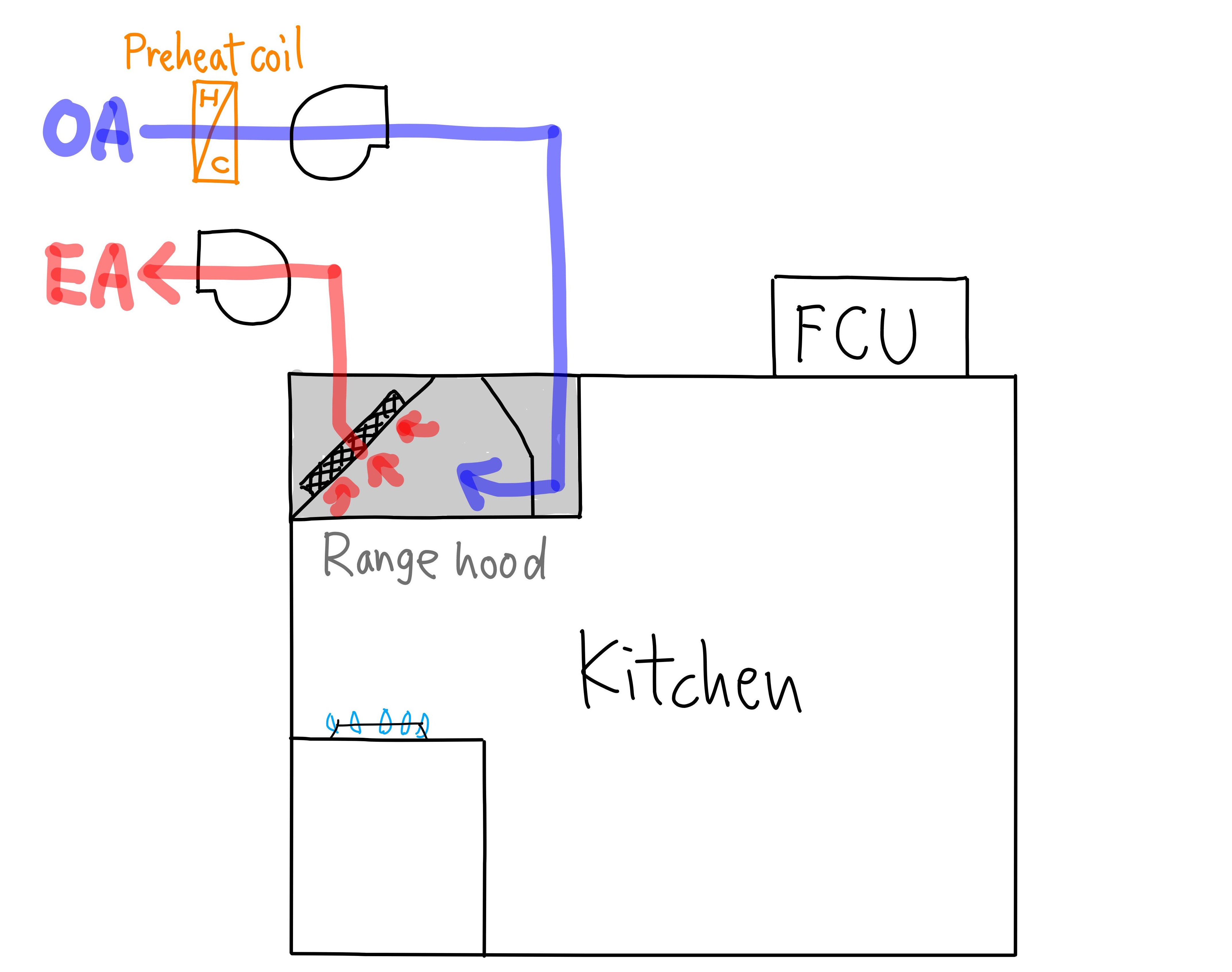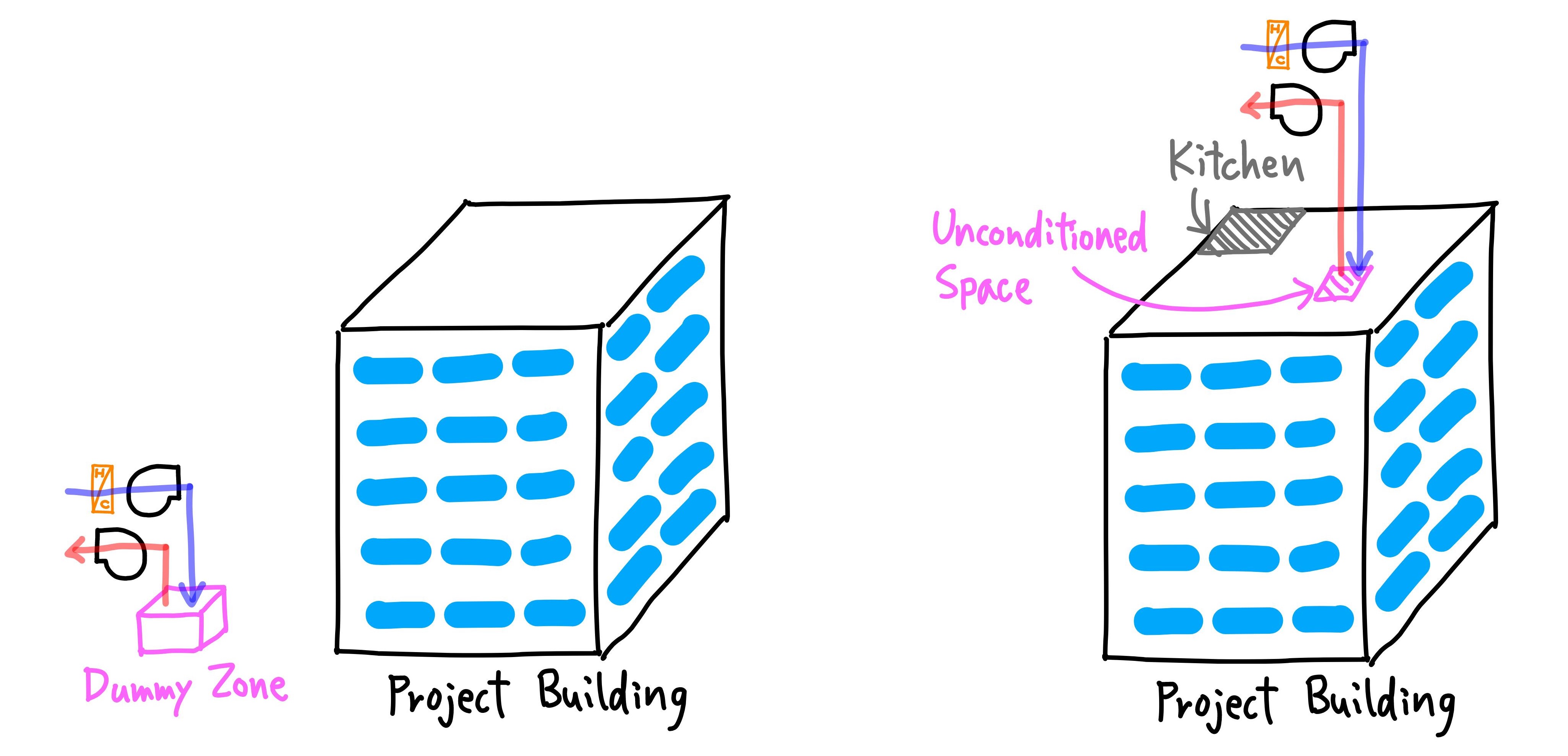How to Model Range Hood with Make-up Air
I want to model a range hood with make-up air as shown below.
- The make-up air supply duct has a preheat coil. The make-up air is preheated to the indoor temperature in winter. The preheating energy varies as the outdoor air temperature varies, so the annual simulation is required. In summer, the make-up air is directly supplied without cooling.
- The make-up air is immidiately exhausted from the range hood and not diffused into the room. Therefore, the meka-up air is Not considered a load handled by FCU. That's the point.

How can I ignore the fresh air load into the room but consider the preheating energy?
Current workaround:
Add a dummy zone outside the project building and model an AirLoop with preheat coil, make-up fan and exhaust fan. The kitchen has only FCU. The floor area of the dummy zone can be excluded from the total floor area in the summary report (html file), but I think the wall and roof area of the dummy zone cannot be excluded in the summary report.
Pick up one unconditioned zone such as lift shaft or pipe/duct riser space in the project building, and model an AirLoop with preheat coil, make-up fan and exhaust fan. The kitchen has only FCU. Better to change the boundary condition of the unconditioned zone surfaces to Adiabatic.

Is there a better solution?





